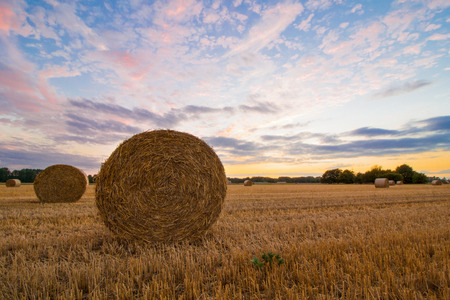Origins of Cunning Folk in Britain
The origins of cunning folk in Britain can be traced back to the medieval period, when rural communities depended on individuals possessing specialised knowledge of folk medicine, charms, and protective rites. These practitioners, often referred to as “wise men” or “wise women,” emerged organically within villages and hamlets, responding to the everyday needs and anxieties of their neighbours. Rooted deeply in pre-Christian traditions and the collective memory of older pagan beliefs, cunning folk blended herbalism, divination, and ritual with a pragmatic approach tailored to local customs. Their practices were not only shaped by ancient lore but also adapted to suit the evolving religious and social landscapes of Britain. Over centuries, cunning folk became integral to village life, acting as mediators between the natural and supernatural worlds while reinforcing communal bonds through shared rituals and remedies. In this way, their role was intrinsically linked to the rhythms and concerns of rural existence, helping to safeguard both the physical and spiritual wellbeing of their communities.
Roles and Functions in Rural Communities
In the tapestry of rural British life, cunning folk held a unique and indispensable position. Far from being mere figures of folklore, they were central to the well-being and cohesion of isolated villages and farming hamlets. Their expertise and authority extended across various domains, making them trusted advisers and problem-solvers in communities often distant from formal medical or religious institutions.
The Many Hats of Cunning Folk
Cunning folk were renowned for their versatility. They wore many hats, adapting their roles according to the needs of the community. The table below outlines their principal functions:
| Role | Description | Community Impact |
|---|---|---|
| Healers | Used herbal remedies, charms, and traditional knowledge to cure ailments. | Provided accessible healthcare, reducing reliance on distant physicians. |
| Wise Men & Women | Offered advice on personal dilemmas, disputes, and daily challenges. | Helped maintain social harmony and offered guidance in uncertain times. |
| Midwives | Assisted with childbirth using both practical skills and protective rituals. | Ensured safer births and continuity of families in rural settings. |
| Protectors | Provided charms or performed rituals to ward off evil spirits, curses, or bad luck. | Fostered a sense of security in communities vulnerable to misfortune. |
The Social Fabric of Village Life
Cunning folk were woven into the everyday fabric of rural existence. In places where the nearest doctor might be miles away and church officials could be distrusted or unavailable, these individuals became pillars of support. Whether mediating disputes between neighbours, offering remedies during outbreaks of illness, or safeguarding livestock with protective amulets, their presence reassured villagers that help was always close at hand.
Navigating Tradition and Change
The adaptability of cunning folk also allowed them to bridge tradition and change. While deeply rooted in local customs, they frequently integrated new knowledge—sometimes borrowing from printed herbals or adapting Christian prayers—to meet evolving community needs. This flexibility strengthened their status as vital intermediaries between the known world and the unknown forces believed to shape daily life.

3. Customs, Tools, and Methods
Cunning folk in Britain were renowned for their unique blend of practical skills, ritual knowledge, and deep-rooted customs. Their reputation as guardians of rural communities was intimately linked to the tangible tools they wielded and the everyday rituals they performed. This section breaks down the typical spells, charms, herbal remedies, and implements associated with British cunning craft.
Spells and Charms: Words of Power
British cunning folk often crafted bespoke spells tailored to the needs of their clients—ranging from love charms to protective incantations. Unlike the dramatic Latin invocations of ceremonial magicians, these spells were more likely to be delivered in everyday English dialects or even local vernacular, making them accessible and familiar. Rhyme and rhythm lent power to their words; for example, a Norfolk cunning woman might recite rhythmic couplets while passing a child through a bramble hoop to cure illness. Protective charms were frequently written on scraps of parchment or paper, folded into tiny packets, and sewn into clothing or hidden above doorways.
Herbal Remedies: The Apothecary’s Art
The British countryside provided a rich pharmacy for cunning folk. They relied heavily on indigenous plants such as mugwort, foxglove, elderberry, and yarrow. Each herb had its reputed virtue: elderberries for fever, mugwort for protection against evil spirits, and dock leaves for healing wounds. Recipes for herbal concoctions were jealously guarded family secrets, passed down through generations. Preparation methods ranged from simple infusions to complex ointments; some remedies required gathering herbs at specific times—such as dawn on Midsummer’s Day—to enhance potency according to traditional beliefs.
Tools of the Trade
Cunning folk made use of practical yet symbolically charged objects. The staff or walking stick was not just a sign of authority but often served as a focus for healing rituals. Iron knives or scissors were used both for physical tasks (such as cutting herbs) and magical acts (like severing curses). Bowls of water acted as scrying mirrors for divination, while wax images might be shaped to represent clients or their adversaries during spellwork. Even everyday household items—pins, nails, or horseshoes—could be transformed into powerful amulets against misfortune.
Distinctive British Beliefs
Underlying these practices was a distinctly British worldview: a blend of Christian faith and older folkloric traditions. Psalms or fragments of the Lord’s Prayer might be woven into spells alongside invocations to local saints or references to legendary figures like King Arthur. The belief in the ‘evil eye’—malicious envy causing harm—was widespread, prompting cunning folk to offer counter-charms using blue beads or salt. Such methods reflect the pragmatic syncretism that characterises Britain’s magical heritage.
Conclusion: Everyday Magic
The customs, tools, and methods of cunning folk reveal their vital role within rural British society—not merely as healers but as custodians of collective wisdom and cultural identity. Through a combination of spoken word, herbal lore, and humble tools imbued with meaning, they bridged the ordinary and the extraordinary in everyday life.
4. Interactions with the Church and Authorities
The relationship between cunning folk and official institutions in Britain was inherently complex, shaped by a shifting legal and religious landscape. While rural communities often valued cunning folk as essential healers and protectors, the attitudes of the Church and state authorities ranged from silent acquiescence to active hostility, depending on prevailing doctrinal and political climates.
Tacit Tolerance: Practicality Over Doctrine
In many localities, especially before the Reformation, church officials often turned a blind eye to the activities of cunning folk. The Church’s primary concern was heresy, not folk medicine or low-level magic—provided it did not openly challenge ecclesiastical authority. Many parish priests recognised that cunning folk addressed needs unmet by formal religion, such as treating livestock illnesses or locating lost property. This pragmatic acceptance allowed cunning folk to thrive under a tacit social contract: their services were tolerated so long as they did not disrupt the established order.
Suspicion and Legal Ambiguity
The introduction of statutes such as the Witchcraft Act of 1542—and its subsequent revisions—signalled a shift in official attitudes. As Protestantism took hold, church authorities became less tolerant of practices associated with superstition or Catholic ritual. Yet, ambiguity persisted: while some cunning practices were criminalised, others remained in a grey area. The table below illustrates this nuanced legal environment:
| Period | Church Attitude | Legal Status | Cunning Folk’s Position |
|---|---|---|---|
| Medieval (pre-1500) | Tacit tolerance | Few prohibitions | Community guardians |
| Tudor & Stuart (1500–1700) | Increasing suspicion | Witchcraft Acts enforced variably | Mixed: respected but vulnerable |
| Georgian & Victorian (1700–1900) | Scepticism and ridicule rise | Laws relaxed then repealed (1736) | Marginalised but persistent |
Persecution and Reform: A Shifting Tide
The period following the Reformation was particularly perilous for cunning folk. Religious reforms made any practice deemed “superstitious” suspect; local authorities sometimes used witchcraft accusations to settle scores or assert control. However, outright persecution was sporadic—most cunning folk escaped the fate of accused witches by emphasising Christian piety and avoiding direct confrontation with clerical authorities.
The Role of Community Advocacy
Despite official hostility, many rural communities defended their cunning folk against prosecution. Villagers often attested to their efficacy or moral character in court, highlighting the enduring disconnect between central policy and local belief. Ultimately, the position of cunning folk vis-à-vis the Church and state mirrored broader societal tensions between tradition, reform, and modernity—a balancing act negotiated anew in each generation.
5. Cunning Folk in British Folklore and Literature
The figure of the cunning person has long occupied a distinctive space within British folklore and literary tradition. Their portrayal in local legends, fairy tales, and later works of literature reveals not only the practical roles they played but also the shifting attitudes of society towards their craft. By examining these cultural representations, we can better understand how cunning folk were both products and shapers of rural imagination.
Folkloric Origins: Tales from the Village Hearth
Across Britain, oral traditions have preserved stories of wise women, pellars, and conjurers who wielded knowledge for the benefit—or sometimes the bewilderment—of their neighbours. In Cornish and East Anglian tales, for example, cunning folk are often depicted as mediators between humans and the supernatural, called upon to lift curses or recover stolen property through spells and charms. These stories typically portray them with a mixture of respect and apprehension; their abilities were acknowledged as essential but not wholly understood.
Fairy Tales: Moral Lessons and Ambiguity
Within British fairy tales, cunning folk frequently serve as pivotal characters who guide heroes or dispense justice. Unlike the overtly malevolent witches found in continental narratives, British cunning folk appear more ambiguous—sometimes benefactors, sometimes tricksters. Their wisdom is prized but always tinged with cautionary undertones, reinforcing communal norms about the responsible use of hidden knowledge.
Literature: From Medieval Ballads to Victorian Novels
As print culture flourished, references to cunning folk began appearing in ballads, chapbooks, and novels. In works like Thomas Hardy’s “The Mayor of Casterbridge,” cunning practitioners are woven into the social fabric as sources of advice and healing, though often marginalised by official authorities. Victorian literature especially reflected anxieties around superstition versus scientific rationalism; writers used cunning folk as symbols of a vanishing rural world or as foils to progress-driven protagonists.
Cultural Reflections: Shaping Public Attitudes
The repeated appearance of cunning folk in these genres reveals their significance beyond mere storytelling devices. Cultural depictions both mirrored local beliefs—affirming that such figures had a place in daily life—and influenced wider perceptions by framing them as either admirable guardians or potentially dangerous outsiders. This dynamic interplay helped shape public attitudes towards magic, community cohesion, and the boundaries between accepted custom and forbidden knowledge.
Legacy in Modern Imagination
Today, echoes of these representations persist in popular media and revived interest in folklore studies. The legacy of cunning folk endures as a testament to Britain’s complex relationship with its magical past—a reminder that even as societies modernise, the allure of secret wisdom continues to capture the national imagination.
6. Decline and Legacy in Modern Britain
The influence of cunning folk began to wane noticeably from the nineteenth century onwards, as Britain underwent profound social, scientific, and legislative change. The rise of formal medical professions, the spread of literacy, and the growing authority of the Church and state all contributed to a shifting cultural landscape in which traditional folk practices were increasingly marginalised. The 1736 Witchcraft Act, which criminalised claims of magical powers, further eroded public trust in cunning folk, framing their arts as fraudulent rather than supernatural. By the early twentieth century, most cunning folk had either abandoned their craft or blended it into other forms of alternative healing.
Despite this decline, the legacy of the cunning folk remains visible in various aspects of modern British culture. Many contemporary folk practices—such as herbalism, divination, and protective charms—can trace their roots directly back to rural cunning traditions. In some parts of Britain, particularly in areas with strong local identities like Cornwall and East Anglia, remnants of old rituals and beliefs persist as part of seasonal festivals or local folklore.
Alternative medicine has also inherited much from cunning folk. The renewed interest in herbal remedies and holistic healing, especially since the late twentieth century, often draws inspiration from the same knowledge base that once empowered village wise-women and men. Modern practitioners sometimes cite historical figures or incorporate traditional techniques as a way to lend authenticity to their practice and differentiate themselves from mainstream medicine.
On a broader scale, the figure of the cunning person endures in British identity as a symbol of independence, resourcefulness, and resistance to outside authority. Literature, television, and film have all played a role in rehabilitating the image of wise folk healers—from Shakespearean witches to contemporary fantasy series. This fascination reflects a persistent ambivalence towards rationality and tradition within British society; while science is respected, there is also nostalgia for lost ways and a certain admiration for those who stood apart from officialdom.
In summary, while the social function of cunning folk has largely disappeared in its original form, their influence lingers on within modern folk customs, complementary therapies, and even national self-image. Their story is not just one of decline but of transformation—a testament to how old beliefs adapt and find new life amidst changing times.


